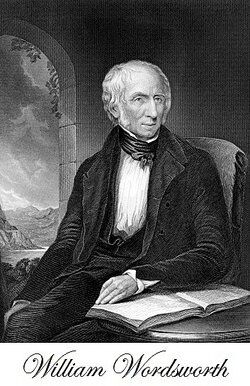
Iambic meter is defined as poetic verse that is made up of iambs, which are metrical "feet" with two syllables. In iambic verse, each line consists of one or more iambs. Iambic pentameter is the most common type of iambic meter but there are several others, as you'll see in the examples below.
Iambs: The Basis of Iambic Poetry
The first syllable in an iamb is unaccented and the second is accented. Here are some examples of iambs:
- exist
- belong
- predict
- away
- the one
- we played
- you know
- I can’t
Examples of Iambic Trimeter
When you combine three iambs, you create poetry in iambic trimeter. Each line has six syllables that alternate stressed and unstressed accents. Here are some examples:
The only news I know
Is bulletins all day
From Immortality.
The only shows I see,
Tomorrow and Today,
Perchance Eternity.
- Emily Dickinson, "The Only News I Know"
When I was one-and-twenty
I heard a wise man say,
'Give crowns and pounds and guineas
But not your heart away;
- E. Housman, "When I Was One-and-Twenty"
We romped until the pans
Slid from the kitchen shelf;
My mother’s countenance
Could not unfrown itself.
- Theodore Roethke, “My Papa’s Waltz,”
I love the jocund dance,
The softly breathing song,
Where innocent eyes do glance,
And where lisps the maiden's tongue.
- William Blake, "Song"
The idle life I lead
Is like a pleasant sleep,
Wherein I rest and heed
The dreams that by me sweep.
- Robert Bridges (no title)
Examples of Iambic Tetrameter
Poems that consists of four iambs per line are written in iambic tetrameter. Each line has eight syllables in alternating stressed and unstressed accents. For example:
I wandered, lonely as a cloud
That floats on high o’er dales and hills
When, all at once, I saw a crowd
A host of golden daffodils.
- William Wordsworth, "I Wandered Lonely as a Cloud"
There is a lady sweet and kind,
Was never face so pleased my mind;
I did but see her passing by,
And yet I love her till I die.
- Thomas Ford, "There is a Lady Sweet and Kind"
The hills, the meadows, and the lakes,
Enchant not for their own sweet sakes.
They cannot know, they cannot care
To know that they are thought so fair.
- Henry Leigh, “Not Quite Fair”
Of Neptune’s empire let us sing,
At whose command the waves obey;
- Thomas Campion, “A Hymn in Praise of Neptune”
Strong Son of God, immortal Love,
Whom we, that have not seen thy face,
By faith, and faith alone, embrace,
Believing where we cannot prove;
- Alfred, Lord Tennyson, “In Memoriam”
Examples of Iambic Pentameter
The most common meter used in poetry and verse, iambic pentameter consists of five iambs and 10 syllables per line. Here are examples:
If ever two were one, then surely we.
If ever man were loved by wife, then thee;
- Anne Bradstreet, “To My Dear and Loving Husband”
In Oxford there once lived a rich old lout
Who had some guest rooms that he rented out,
- Geoffrey Chaucer, The Miller’s Tale
But, soft! what light through yonder window breaks?
It is the east, and Juliet is the sun.
Arise, fair sun, and kill the envious moon,
Who is already sick and pale with grief,
- Wiliam Shakespeare, Romeo and Juliet
Where are the songs of Spring? Ay, where are they?
Think not of them, thou hast thy music too,
- John Keats, “Ode to Autumn”
I have been one acquainted with the night.
I have walked out in rain -- and back in rain.
I have outwalked the furthest city light.
I have looked down the saddest city lane.
- Robert Frost, “Acquainted with the Night”
Sound Out the Syllables
Now you have seen many different examples of iambic meters in classic poetry and verse. Now when you read literature or poems you will be better able to recognize the iambs that you see and how they work in poetic verse to create rhythym. Combine this with some essential poetry terms and genres, and you'll soon be a poetry master.